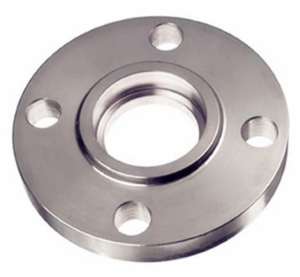The SW (Socket Weld) flange is a testament to precision engineering and streamlined connectivity. It stands in the intricate world of industrial piping systems. This detailed guide aims to unravel the complexities of SW flanges. It sheds light on their characteristics. It more specifically explores the nuanced differences between SW and slip-on flanges.
What is SW Flange?
The SW flange, a crucial component in piping applications, is renowned for its efficient and secure connection. The design features a socket at the flange’s bore. The pipe is inserted here. A fillet weld at the outer diameter ensures a robust, leak-resistant joint. This construction simplifies assembly. It also enhances the overall connection integrity.
Advantages of SW Flanges
1. High Pressure Performance
SW flanges excel in high-pressure environments. The welded connection provides enhanced strength. It is a preferred choice in applications where withstanding substantial pressure is non-negotiable.
2. Leakage Prevention
The fillet weld not only contributes to the structural strength but also acts as a barrier against leaks. This makes SW flanges particularly advantageous in systems where fluid containment is critical.
3. Space Efficiency
The compact design of SW flanges renders them space-efficient. In situations where space is a concern, such as in compact piping configurations, SW flanges offer a strategic solution.
Differentiating SW Flanges from Slip-On Flanges
Before delving into the differences, it’s essential to briefly understand slip-on flanges. Unlike SW flanges, slip-on flanges have a bore slightly larger than the pipe’s outer diameter. They are slipped over the pipe and then welded, creating a strong yet less rigid connection compared to SW flanges.
Distinguishing Features: SW vs. Slip-On Flanges
1. Welding Configuration
The most apparent difference lies in the welding configuration. SW flanges involve a socket weld, providing a robust joint. In contrast, slip-on flanges utilize a fillet weld at the bottom and top of the flange, creating a less rigid connection.
2. Space Considerations
SW flanges, with their compact design, are advantageous in applications where space is a premium. Slip-on flanges have a slightly larger profile. In situations where ease of assembly is more important than space, they may be preferred.
3. Strength and Rigidity
SW flanges typically offer higher strength and rigidity due to the socket weld configuration. This makes them suitable for high-pressure systems where structural integrity is paramount. Slip-on flanges, while robust, may exhibit slightly less rigidity.
Factors Influencing Selection
1. Application Requirements
Consider the specific requirements of your application. If high-pressure performance and leak prevention are critical, SW flanges may be the optimal choice.
2. Space Constraints
Evaluate the available space for your piping system. In situations where space is limited, SW flanges’ compact design may offer a practical solution.
3. Installation Preferences
Assess your installation preferences. If ease of assembly is a priority and space constraints are less critical, slip-on flanges may align better with your needs.
Conclusion
The SW flange stands as a symbol of precision and efficiency in industrial piping. Understanding the advantages and nuanced differences between SW and slip-on flanges empowers engineers and decision-makers. They can make informed choices based on their project’s specific demands.
Post time: Dec-22-2023


